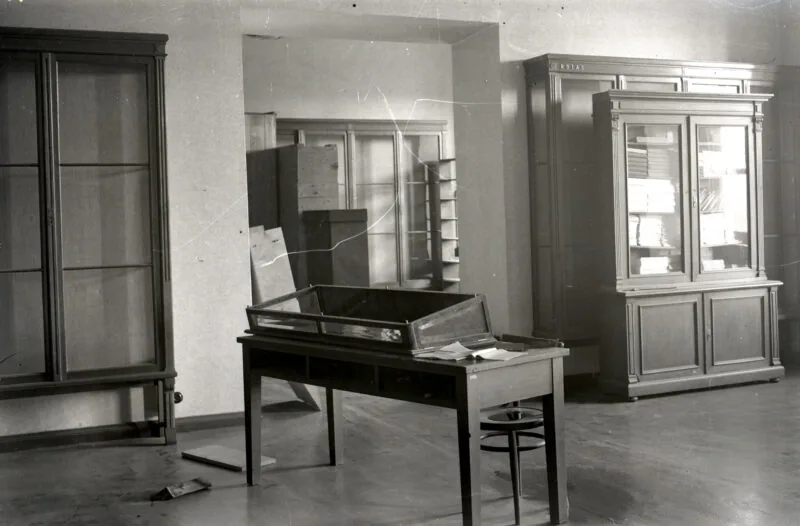In the shadow of the occupations and the war (1940–1944)
World War II and the Soviet and Nazi occupations imposed new ideological frameworks, which influenced both the Museum’s public activities and the work on its collections.
The 1940 Soviet occupation and the subsequent 1941 Nazi occupation only temporarily interrupted the Museum’s work. However, the political aims of the occupying powers had a lasting impact on all areas of the Museum’s activities.
In the autumn of 1944, as the Nazis retreated from Riga, the Museum’s most valuable collections were ordered to be transported to the West. The museum staff tried to delay the shipment and hid some of the most valuable items in Riga Castle, however, thousands of the museum’s valuables had to be packed up and taken out of Latvia by order of the occupying authorities. The evacuated collection was accompanied by several of the museum’s staff members. But it was thanks to the selfless efforts of the Ethnography Department’s specialist Mērija Grīnberga (1909–1975), who did not abandon the valuables entrusted to her even under the most unfavourable conditions, that almost all of these cultural treasures returned to Riga in 1946.
Objects related to the Latvian state and its institutions were endangered, so the staff members tried to protect from destruction or theft. In 1944, as the Red Army approached Riga, the director Valdemārs Ģinters (1899–1979) and the head of the Ethnography Department, Ādolfs Karnups (1904–1973), concealed in a basement wall of Riga Castle items of the abolished Latvian Army and other organisations. Some private belongings of President Kārlis Ulmanis and Riga castle interior equipment were also moved to the Museum premises. Valdemārs Ģinters fled to Sweden, but Ādolfs Karnups was convicted in 1946 by a Soviet military tribunal and spent nine years in exile.
